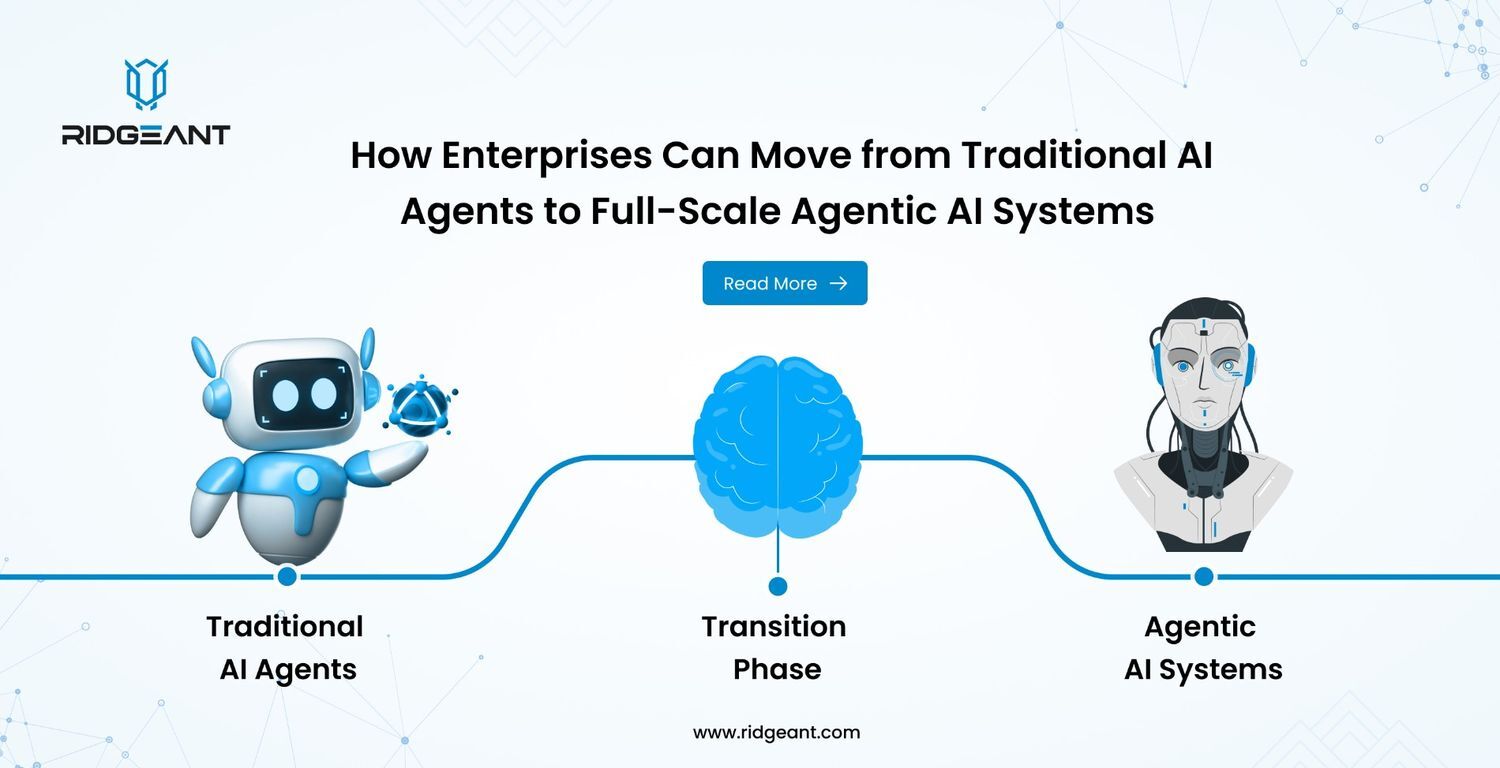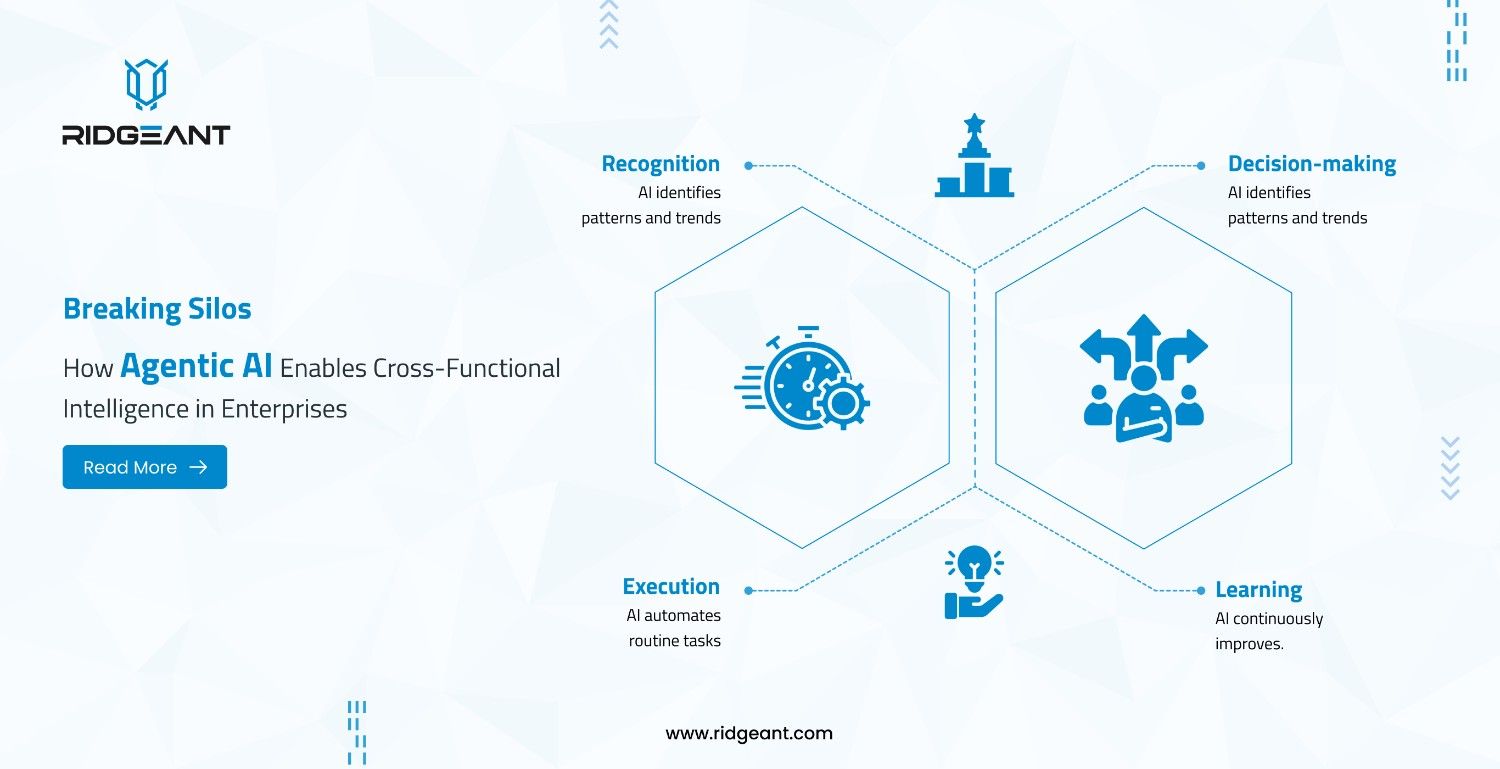
Conquering Data Debt: Causes, Types, Consequences, and Mitigation Strategies
- Data Analytics, Data Engineering, Data Science
- December 18, 2023
- Ridgeant

Data debt presents a significant hurdle for organizations operating in the data-driven business landscape. Much like the technical debt familiar to software developers, data debt sneaks into the picture when data isn’t meticulously organized and maintained. It’s the silent productivity killer, sapping computational resources and hindering progress across the board.
For companies riding the tech wave, the speed of innovation often outpaces the ability to establish robust solutions. It’s a game where makeshift fixes can quickly become outdated, leaving organizations dealing with the true cost of managing their data. A recent global study reveals a sobering reality where a staggering 82% of companies make crucial decisions based on outdated information. This data staleness reflects a failure in the systematic management and upkeep of data, resulting in incorrect decisions and tangible losses in revenue.
To tackle this issue head-on, it’s crucial for business leaders to understand the causes of data debt and explore proactive strategies for effective data management.
What Is Data Debt?
The accumulation of undocumented, unused, incomplete, and inconsistent data embodies what is termed data debt. It is a specific form of technical debt that crops up when data or analytics teams neglect the essential tasks of organizing, cleaning, and categorizing their data.
In the pursuit of becoming data-driven, companies often experience a transformative shift, necessitating increased investments in data engineers, scientists, and analysts. However, the rapid pace and pressure exerted on these teams result in the accrual of data debt. Even larger organizations grapple with this challenge when lacking proper governance and data management tools, finding it increasingly difficult to address their growing data debt.
Understanding Data Debt: Root Causes and Diverse Manifestations
The following are the key factors contributing to the emergence of data debt within organizations:
- Lack of Data Governance:
One of the foundational causes of data debt is the absence of policies and procedures for effective data management, encompassing aspects like data quality, security, and privacy. Without proper governance, data can spiral into inconsistency, unreliability, and overall difficulty in management.
- Outdated Data Structures:
As software products evolve, so must the underlying data structures. Failure to update these structures can result in data inconsistencies and poor quality, contributing significantly to the accrual of data debt.
- Data Silos:
The existence of data silos, where data is segregated across different systems or departments, poses a substantial risk. It creates challenges in accessing and managing data, leading to inconsistencies, duplication, and a lack of visibility—particularly pronounced in diverse teams operating across various geographies.
- Resource Intensity of Data Management:
While data management has always been resource-intensive, not all organizations can afford to maintain a full data team. Inadequate resources for company-wide data management make it easier for organizations to fall behind in addressing their data debt.
- Manual Data Access Governance:
Companies relying on manual strategies to govern data access may struggle to make data available when needed most. Moreover, the practice of making copies of data for each query introduces potential vulnerabilities that go unaddressed.
- Rapid Growth and Pressure:
The rapid growth of organizations brings increased data volumes, often pressuring teams to deliver results quickly. This pressure can lead to the adoption of patches and workarounds that, while practical, may cause problems down the road.
Examining different data types reveals the complex challenges of data debt in organizations.
- Untracked and Uncategorized Data:
Arising from hasty decision-making, this type of debt occurs when solutions are created without considering the potential long-term expenses. Short-term gains lead to unforeseen costs later.
- Duplicate Data:
Partial copies of primary data sources create confusion and hinder tracking the source of truth. Removing duplicates is crucial unless they have a direct impact on specific tables or dashboards.
- Poor Quality Data:
This category involves knowingly making suboptimal decisions due to pressure, politics, or a disregard for future impacts. Short-term objectives often override long-term data management considerations.
- Untouched or Partially Utilized Data:
Unused or underutilized data assets in warehouses or BI tools fall under this category. Many teams spend time managing reports and producing data that remains dormant, further adding to data debt.
- Consciously Accepted Data Debt:
In this scenario, organizations knowingly choose to accumulate data debt, understanding the associated costs. Careful analysis and a planned approach are implemented to reduce the debt at a later stage. This decision may be a strategic move with a full understanding of the incurred debt.
The Costly Impact of Data Debt on Organizations: A Financial Reality Check
In navigating the complex landscape of data debt, organizations must recognize its substantial impact on their financial health. Annually, the toll of poor data quality averages $12.9 million for organizations, directly and indirectly impacting revenue and fostering long-term complications in data ecosystems. Let’s delve into the intricacies of how data debt can shape an organization’s financial metrics and overall success:
Direct Costs:
- Data Storage and Compute Expenses:
Storing data, while more affordable, is not free. Direct compute costs arise when updating and storing tables that go unused. These expenses contribute to an organization’s financial burden without yielding any benefits.
- Inefficient Resource Allocation:
Collecting unused, undocumented, and messy data poses challenges in finding valuable information. Poor naming conventions, lack of documentation, and ungoverned dashboards create confusion, hindering employees from identifying trustworthy and correct data sources.
- Lack of Evaluation and Continuous Accumulation:
Many teams neglect the evaluation of data debt, continuing to collect data and dashboards irrespective of their value. Ad hoc audits, while attempted, are challenging to conduct consistently across the entire organization. Decreasing data debt can result in decreased technology costs and significantly increased productivity.
Indirect Costs:
- Cost of Poor Data Management:
Poor data management practices lead to data debt, resulting in increased storage and software licensing costs due to data duplication or improper migration. Additionally, labor and time costs are incurred in identifying and addressing bad data.
- Operational Inefficiencies:
Data debt affects an organization’s operational efficiency, hindering day-to-day functions and impeding decision-making processes. Difficulty in accessing relevant and reliable data creates roadblocks across various departments.
- Compliance and Security Risks:
Poor data governance and data debt make identifying and protecting data subject to compliance regulations challenging. The exposure of customer data and the organization’s reputation to risk becomes imminent if sensitive data cannot be easily identified and protected.
- Cost of Missed Opportunities:
Organizations incur both direct and indirect costs due to data-related issues. The time and resources required to tackle data problems contribute to system performance degradation, affecting data availability and efficiency across enterprise functions. Missed opportunities arise as organizations struggle with data debt, impacting overall business outcomes.
Proactive Strategies to Prevent and Mitigate Data Debt
Addressing data debt is a collective effort that necessitates proactive measures from every corner of the organization. Investing in modern data infrastructure and tools is crucial for managing data efficiently.
- Shift-Left Data Governance Practices:
Similar to DevOps practices, DataOps engineers and data scientists should embrace a shift-left approach to data governance. Integrating governance practices while building or updating data pipelines, analytics, and machine learning models helps in early issue identification and resolution.
- Leveraging Data Governance Technologies:
Utilizing data governance technologies, such as data catalogs, data lineage tools, and metadata management systems, aids in managing and tracking data sources effectively. These tools reduce the risk of data debt by providing insights into data models and lineage.
- Establishing Data Stewardship Roles:
Designating data stewardship roles, such as data architects, data engineers, and data analysts, is vital for maintaining data models, ensuring accuracy, and addressing issues to minimize data debt.
- Data Observability for Proactive Management:
Integrating data observability into every step of the data process ensures visibility and status across the entire data life cycle. This proactive approach helps identify and address issues promptly, communicating data flows to business users, and establishing an audit trail for debugging and compliance audits.
- Mitigating Data Systems Debt:
Addressing data systems debt involves ensuring that underlying data management platforms align with business needs. Utilizing vendor-neutral tools supported by open standards prevents data from being inaccessible due to outdated applications. Automation of data extractions and centralized data platforms, such as data lakes or data warehouses, aids in reporting, analytics, and platform migrations.
- Optimizing Database and Data Management Platforms:
Architects need to debate and select optimal database and data management platforms, considering options beyond traditional relational databases. Choosing less-optimal platforms can lead to workarounds and complexities, contributing to data debt.
Conclusion
From the stealthy accumulation of uncategorized data to the repercussions of overlooking duplicate data, the landscape is riddled with potential pitfalls. The financial implications are tangible, ranging from storage costs to missed opportunities, urging organizations to reevaluate their data management strategies.
Mitigating data debt requires a proactive stance. Beyond the technological arsenal of modern infrastructure and governance tools lies the heart of the matter—cultivating a culture where data quality and trust are paramount.
Organizations must embrace these insights, prioritizing data health as an integral component of their strategic roadmap to navigate the evolving data landscape for growth, efficiency, and enduring success.
A proactive approach to addressing data debt is not only necessary, but also strategically critical for enterprises hoping to prosper in the data-driven age. Ridgeant, being a top provider of AI and data science development services, we enable companies to overcome data obstacles and lay a solid foundation for long-term success, efficiency, and innovation in the dynamic field of data management.














